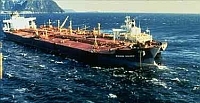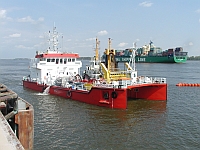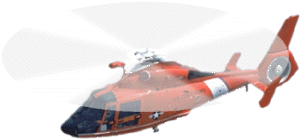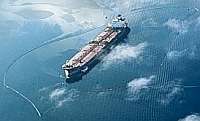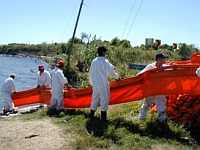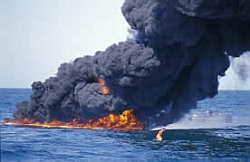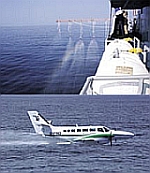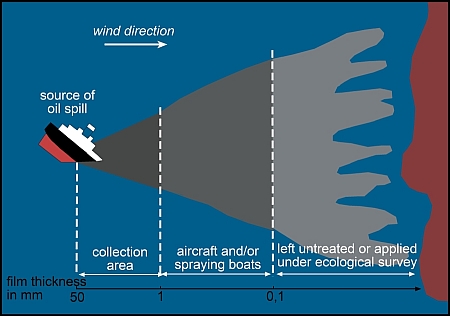2. Oil Pollution
Oil spill response
While the volatile parts evaporate quickly, the remaining parts of the oil begin to spread and weather immediately after having been spilt.
The main objective of response to an oil spill is to reduce its impact on nature and human health and activities. The appropriate response measures largely depend on a detailed and continuous assessment of the spill conditions. That is the extent of the spill, its movement and predicted fate. The decision makers in such a case are assisted by a team of scientific, technical and financial advisory groups. Well trained, equipped and supported teams are mobilised to act on the scene.
The first response to be taken is to try and retain as much oil in the tanks of the vessel in distress as possible before it spills into the sea. For this purpose the vessel is stabilised and the remaining oil is pumped into another tanker.
Once released into the sea, the oil spill must be constantly monitored (see next page). Under normal circumstances (i.e. if the weather conditions allow it), this is done by helicopters.
Every effort is made to collect the oil as close as possible to the source of the spill. Once the spill starts to spread and the heavy parts sink, the oil is very difficult to remove.
The most effective way of removing an oil spill from the sea surface is its physical removal. This can be prepared by containing the spill site with a boom. The oil will then stay within the surrounded area and can be removed from the surface.
If additional risks for humans and the environment can be ruled out or at least be reduced to a minimum, burning the pollutant may be another choice.
Sorbents or herding agents can assist in reducing the spreading and thinning of the oil film prior to its physical removal from the water surface.
Another option is the use of chemical dispersants. When the conditions for the use of dispersants are right, their application has proven to be effective and, on balance, ecologically acceptable (bearing in mind that the alternative might be an oiled beach). Dispersants can be applied by spraying boats and/or aircraft.
The further the spill spreads (due to influence of wind and currents), the thinner the film becomes. Once the film thickness reduces to less than about 1 mm, the physical removal of the oil becomes nearly impossible (see Figure below). Once the film thickness is less than about 0.1 mm, the oil will usually be left untreated.
